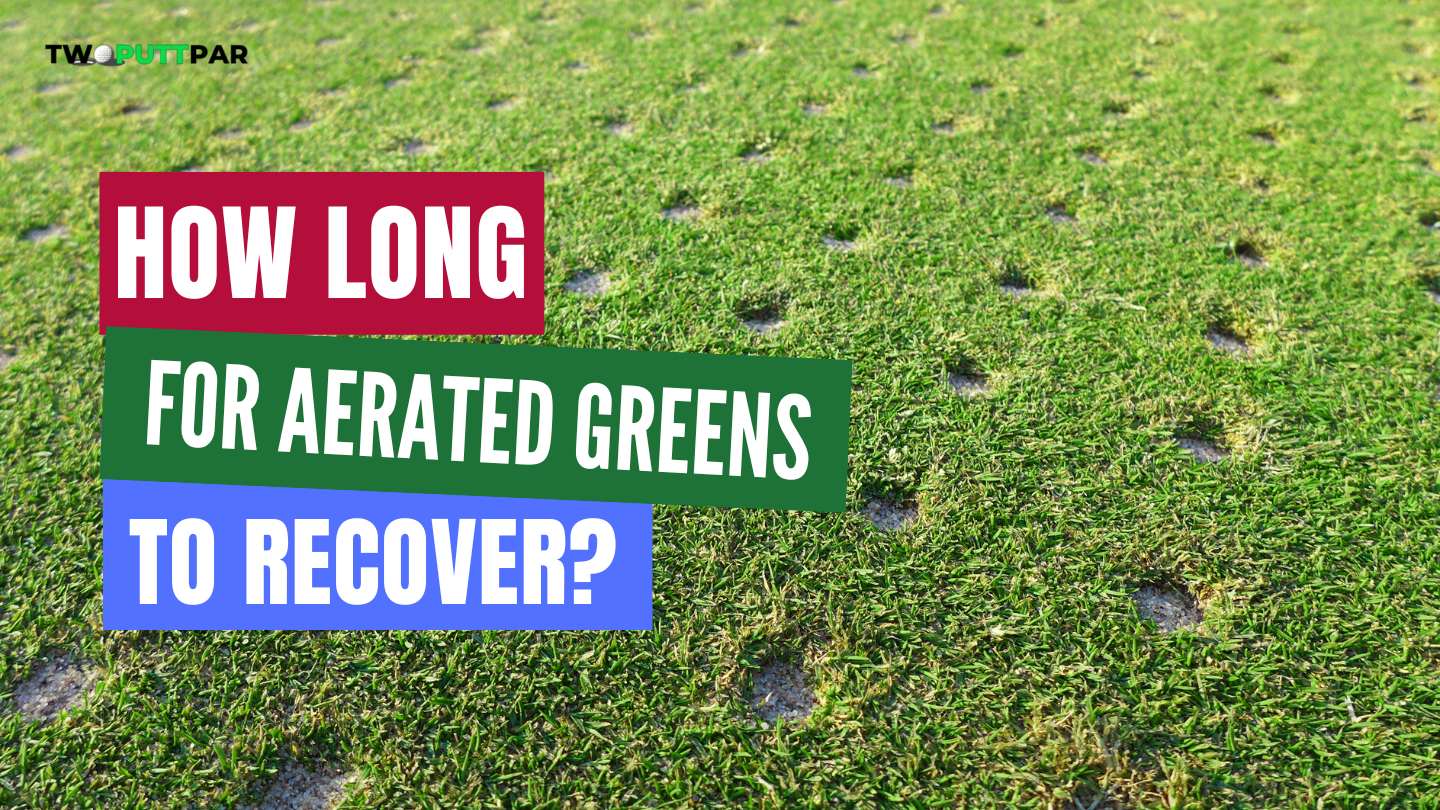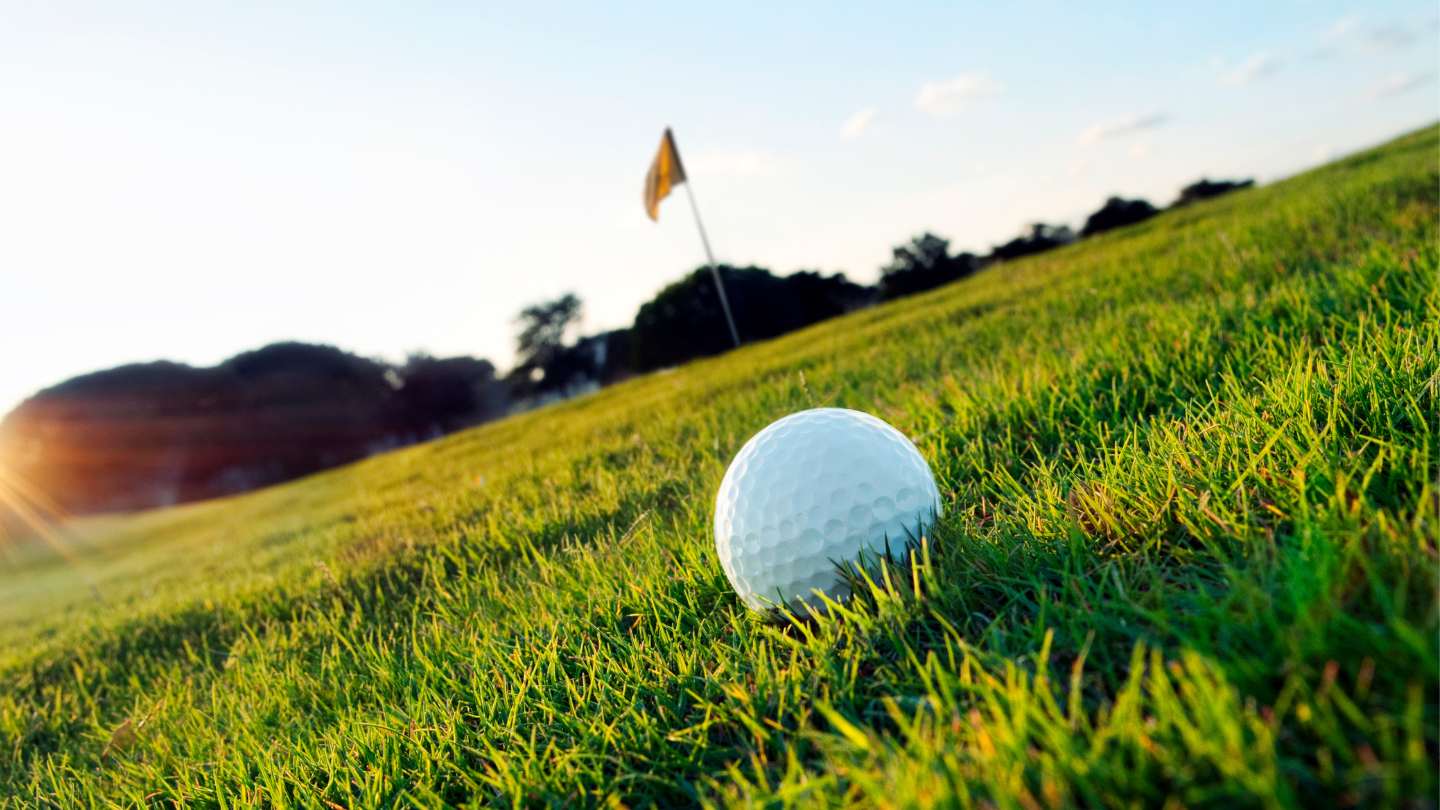
Mid-Handicap golfer who loves to share his rounds and experiences playing courses all around the UK in a hope that it will help others find those hidden gem golf courses.
I seek out golf courses that don’t get the credit they deserve and are often overlooked for the bigger more well known ones.
Aerating is an important process that involves creating small holes in the soil to allow air, water, and nutrients to penetrate deeper into the ground.
This process helps improve soil compaction and allows roots to grow stronger and deeper, resulting in healthier plants.
In this post, we will be discussing the recovery time for aerated greens and providing valuable information for those looking to maintain healthy green spaces.
The recovery time for aerated greens, typically ranging from 2 to 6 weeks, is influenced by several factors including the type of aeration method used (core, spike, or solid tine), weather conditions (optimal recovery occurs in warm, moist environments), and post-aeration care practices such as regular watering and fertilising, which promote rapid grass growth and healing.
How Long For Aerated Greens To Recover
The recovery time for aerated greens typically ranges between 2 to 6 weeks, depending heavily on factors such as weather conditions and post-aeration care.
Aerated greens undergo a healing process that can vary significantly in duration.
This period is when the grass recovers from the disruption caused by aeration, filling in the holes and re-establishing a smooth playing surface.
The timeline for this recovery is often influenced by several factors.

Weather conditions play a pivotal role in this process.
Optimal conditions for fast green recovery are warm, moist environments that promote rapid grass growth.
On the contrary, cold, dry, or excessively hot conditions may slow down recovery, extending the healing period beyond the typical 2 weeks.
Post-aeration care is another crucial factor. Proper maintenance practices, such as regular watering and fertilising, can speed up recovery by providing the necessary nutrients directly to the roots.
However, actions like mowing should be delayed until the turf has sufficiently recovered.
Lastly, the method of aeration used also impacts the recovery time. More invasive methods, like core aeration, generally require a longer recovery time than less disruptive methods, such as a spike or solid tine aeration.
Factors Affecting Aerated Green Recovery Time
The recovery time of aerated greens is influenced by several factors including the:
Type Of Aeration Method Used
The method of aeration used significantly impacts recovery time. Core aeration involves removing small plugs or cores of soil and turf from the lawn.
As it is more invasive, the recovery time is longer compared to other methods. On the contrary, spike or solid tine aeration simply pushes soil aside to create holes, disturbing less area and thus, leading to quicker recovery.
Another method, liquid aeration, involves spraying a solution that breaks up compacted soil, offering the least disruption and fastest recovery.
Timing Of Aeration During The Year
The timing of aeration is crucial for the recovery of the greens. For most grass types, the best time to aerate is during their peak growing seasons when they can recover quickly.
Cool-season grasses like Kentucky bluegrass or ryegrass prefer early spring or autumn.
Warm-season grasses like Bermuda or Zoysia grass recover faster when aerated in late spring or early summer. Aerating outside these periods can lead to slower recovery and risk damage to the turf.
Climate And Weather Conditions
Weather conditions greatly influence the recovery speed of aerated greens. Ideal conditions would be warm and moist, promoting rapid grass growth.
Cold or dry conditions can slow down the recovery process as the grass growth rate decreases. Similarly, excessively hot conditions can stress the grass, leading to slower recovery.
Therefore, checking the weather forecast before aeration can help choose the best conditions for quick recovery.
Maintenance Practices Following Aeration
Maintenance practices following aeration significantly impact the speed of recovery. Watering needs to be regular and generous to encourage deep-root growth.
Fertilising after aeration can also speed up recovery by providing necessary nutrients directly to the roots.
However, mowing should be delayed until the grass has recovered enough to withstand the stress of being cut.
Health And Condition Of The Turfgrass Before Aeration
The health and condition of the turf before aeration plays a significant role in determining recovery time.
A lawn that is already healthy and well-maintained will recover faster than one that’s stressed or poorly maintained.
Regular feeding, watering, and mowing can all contribute to the overall health of your lawn, making it more resilient and able to recover from aeration more quickly.
When Do Golf Courses Aerate Their Greens
Golf courses typically aerate their greens during the peak growing seasons of the grass type, often once or twice a year, to ensure minimal damage and quick recovery.
Peak Growing Seasons
Aeration is best performed during the peak growing seasons of the grass type on the course.
This is when the grass is healthiest and can recover quickly from the disruption caused by aeration. For cool-season grasses, this is usually early spring or autumn, while for warm-season grasses, late spring or early summer is ideal.
Frequency of Aeration
The frequency of aeration depends on the type of greens and the specific needs of the golf course.
Typically, aeration is done at least once or twice a year. However, some courses may require more frequent aeration, especially if they experience heavy foot traffic, which causes soil compaction and thatch build-up.
Timing Based on Geographic Location
The timing of aeration can also vary based on the geographic location of the golf course.
For instance, in the Mid-Atlantic and Northeast regions, the ideal time for autumn greens aeration is usually mid to late September or early October. This timing generally allows for about 14 days of recovery before the ground freezes.
Post-Aeration Practices
Following aeration, golf courses implement specific maintenance practices to aid recovery.
These include regular watering and fertilising to provide necessary nutrients directly to the roots. It’s also advisable to delay mowing until the grass has had enough time to recover.
Consideration for Golfers
For golfers, it’s important to note that while aeration might temporarily affect playing conditions, it is a crucial process for maintaining the health and quality of the greens.
If a course has recently been aerated, it might be wise to allow a couple of weeks for recovery before playing.
FAQs
Q: Why do greens take time to recover after aeration?
A: When greens are aerated, small holes are created in the green surface to relieve compaction and improve drainage. These holes need time to heal and fill in with new grass growth. During the recovery period, golfers may notice a temporary decline in putting performance as the greens may be slower and have a slightly uneven surface.
Q: What is the aeration process for greens?
A: The aeration process for greens typically involves the use of specialized machinery to create small holes in the playing surface. This can be done through methods such as core aeration, where plugs of soil are removed from the greens, or through the use of solid tines which simply create holes without removing any soil.
Q: Can I still play golf on freshly aerated greens?
A: While it is generally not recommended to play on freshly aerated greens, some golfers may still choose to do so. However, it’s important to note that the playing conditions on freshly aerated greens may not be ideal, with the surface being uneven and the speed of the greens being slower than usual. It’s always best to consult with the golf course or check their schedule for aeration before planning your tee time.
Q: How does aeration affect the play of the golf ball?
A: Aeration can impact the play of the golf ball on the greens. The small holes created during the aeration process can cause the ball to bounce or change direction unexpectedly, making putting more challenging. Golfers may need to adjust their putting technique and be prepared for the added variables on greens that have been recently aerated.
Q: Are there any specific tips or recommendations for golfers playing on recently aerated greens?
A: Golfers playing on recently aerated greens should keep in mind that the putting surfaces may be slower and slightly uneven. It’s advisable to hit putts more firmly to ensure they reach the intended target and to pay close attention to any break or deviation caused by the aeration holes. Additionally, golfers should be patient and understanding during the recovery period, as the golf course staff works to bring the greens back to their optimal condition.
Q: When is the best time to play on greens that have been recently aerated?
A: The best time to play on greens that have been recently aerated is generally after a few weeks of recovery time. The golf course staff will typically inform golfers about the state of the greens and when they are expected to be fully recovered. It’s always a good idea to check with the course or inquire about tee times to ensure the greens are in the best possible condition for play.
Q: What is top dressing and how does it relate to aerated greens?
A: Top dressing is a practice where a thin layer of sand or other organic material is applied to the greens after aeration. This process helps to fill the aeration holes and provide a smoother surface for play. Top dressing is often done in conjunction with aeration to enhance the recovery and overall health of the greens.
Q: How does weather conditions affect the recovery time of aerated greens?
A: Weather conditions play a significant role in the recovery time of aerated greens. In general, warmer weather and adequate moisture levels promote faster recovery, allowing the grass to grow and fill in the aeration holes more quickly. Conversely, cooler temperatures and dry conditions can slow down the recovery process, extending the time it takes for the greens to fully recover.
Conclusion
In conclusion, the recovery time for aerated greens is a vital aspect to consider when maintaining a healthy and aesthetically pleasing lawn.
By following proper practices such as correct aeration techniques, optimal watering and fertilization, and paying attention to weather conditions, you can ensure that your greens will recover quickly and thrive in no time.
It’s also essential to be patient and not expect immediate results as the recovery process may take several weeks.
Affiliate Disclaimer – As an affiliate, we may earn a commission from qualifying purchases. We get commissions for purchases made through links on this website from Amazon and other third parties.





Leave a Reply